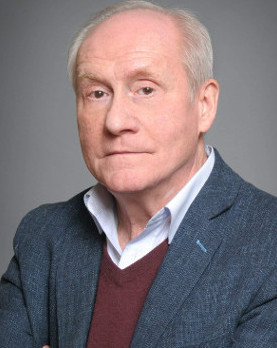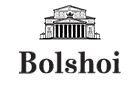
Biography
He completed his studies at the Moscow Art School under the Moscow State Art Institute named after V.I. Surikov at the Academy of Art of the USSR (now the Moscow Central Art School under the Russian Academy of Art). In 1972, he graduated from the faculty of theatre design at the Moscow Art Theatre School.He collaborated with outstanding conductors of our time: Gennady Rozhdestvensky, Mark Ermler, Evgeny Kolobov, Algis Žiūraitis, Yuri Simonov, Eri Klas, Peter Schneider and Mikhail Yurovsky.
And with significant directors: Boris Pokrovsky, Andrei Goncharov, Volker Schlöndorff, Hans-Joachim Frey and stars of the world of ballet, choreographers: Vladimir Vasiliev and Mikhail Lavrovsky.
Many of his works were created in partnership with his brother Rafail Volsky (1938-2007), but in the early 1980s their creative alliance of “set designer – costume designer” was established. In total, he designed around three hundred opera, ballet and drama performances in Moscow, St Petersburg, Vilnius, Tallin, Minsk, Baku, Munich, Verona, Paris, Athens, Budapest, Sofia, Tokyo and Hong Kong.
In 1979, he debuted at the Bolshoi Theatre as designer of the opera Giulio Cesare and Cleopatra by G.F. Handel (conductor V. Vais, director V. Milkov).
For many years productions designed and 'dressed' by Victor and Rafail Volsky were performed at the Bolshoi Theatre: Das Rheingold by R. Wagner (conductor Y. Simonov, director V. Milkov, 1979), Iphigénie en Aulide by C.W. Gluck (conductor M. Ermler, director V. Milkov, 1983), Werther by J. Massent (conductor A. Žiūraitis, director’s debut of Elena Obraztsova, 1986), Rusalka by A. Dargomyzhsky (conductor M. Ermler, director M. Kislyarov, 2000).
Amongst the productions at the Bolshoi Theatre in the making of which he participated as designer, there are ballet performances as well: The Tale of the Priest and of his Workman Balda to music by D. Shostakovich (conductor P. Sorokin, choreographer V Vasiliev, 1999) and one-act ballets produced by M. Lavrovsky Nijinsky to music by S. Rachmaninov and Matador to music by M.d. Falla (conductor P. Klinichev, 2001).
V. and R. Volsky participated in the production of the opera Prince Igor by A. Borodin at the Arena di Verona Opera festival (1987, director Boris Pokrovsky), the opera Lady Macbeth of Mtsensk by D. Shostakovich at the Bavarian State Opera, produced by a German director, Volker Schlöndorff, 1993).
Boris Pokrovsky became the key figure in the creative biography of the artist. Viktor Volsky was invited to the Chamber Musical Theatre by B. Pokrovsky (now the Chamber Stage of the Bolshoi Theatre named after Boris Pokrovsky) in 1982. Based on his designs, the sets were made for the following opera performances: Don Giovanni, ossia Il dissoluto punito (1987), Le Nozze di Figaro (2001), Die Zauberflöte (2004) by W.A. Mozart. Mozartiana of the master and artist have been added to the golden canon of Pokrovsky’s theatre.
In 1987, as designer, he participated in the production of the opera Khovanshchina by M. Mussorgsky at Estonian National Opera and Ballet Theatre (Tallin, 1987, director B. Pokrovsky). At the Chamber Theatre they worked together on the operas L'incoronazione di Poppea by K. Monteverdi (1998), Life with an Idiot by A. Schnittke (1993), Giulio Cesare and Cleopatra by G.F. Handel (2002).
At the Chamber Theatre, such operas as The Government Inspector by V. Dashkevich (2007) and The Run by N. Sidelnikov (2010) directed by Olga Ivanova, saw the light in the sets by Volsky.
Amongst choreographers, the most intimate creative contact developed with a People’s Artist of the USSR, Vladimir Vasiliev. Based on the opera by N. Rimsky-Korsakov Mozart and Salieri and Requiem by W.A. Mozart, Evgeny Kolobov, Vladimir Vasiliev and the brothers Volsky created the production Oh, Mozart! Mozart… (the Moscow Theatre Novaya Opera/ now The Kolobov Novaya Opera Theatre, 1995).
Together with V. Vasiliev, they realised the productions of the ballets:
Don Quixote by L. Minkus (the “Kremlin Ballet” Theatre, Moscow, 1994)
Cinderella by S. Prokofiev (the Voronezh Opera and Ballet Theatre, 2006)
Macbeth by K. Molchanov (the Voronezh Opera and Ballet Theatre, 2010)
The Red Poppy by R. Glière (the Krasnoyarsk Opera and Ballet Theatre named after D.A. Khvorostovsky, 2010)
Anyuta to music by V. Gavrilin (the Voronezh Opera and Ballet Theatre, 2008; the Krasnoyarsk Opera and Ballet Theatre named after D.A. Khvorostovsky, 2009; the Samara Opera and Ballet Theatre, 2011; the National Academic Grand Opera and Ballet Theatre of the Republic of Belarus, Minsk, 2012; the Bashkir Opera and Ballet Theatre, Ufa, 2015 – in total, over 20 premiers at theatres in Russia and abroad)
The Tale of the Priest and of his Workman Balda to music by D. Shostakovich (the Moscow State Academic Children’s Theatre named after N.I. Sats)
Over the last two decades, amongst his most significant works in opera are: the collaborations with Hans-Joachim Frey Der fliegende Holländer by R. Wagner (the National Academic Grand Opera and Ballet Theatre of the Republic of Belarus, Minsk, 2013) and Ariadne auf Naxos by R. Strauss (The Chamber Musical Theatre named after B.A. Pokrovsky/ now the Chamber Stage of the Bolshoi Theatre, 2016)
and such operas as: Rigoletto by G. Verdi, (director M. Kislyarov, the Samara Opera and Ballet Theatre, 2008)
The Queen of Spades by P. Tchaikovsky (the Nizhny Novgorod Opera and Ballet Theatre named after A.S. Pushkin, 2007)
Tosca by G. Puccini (the Chuvash State Opera and Ballet Theatre, Cheboksary, 2005)
Pagliacci by R. Leoncavallo (the Bashkir State Opera and Ballet Theatre, Ufa, 2004)
,br> He designed drama performances for theatres in Moscow, such as the Maly Theatre, the Moscow Art Academic Theatre named after M. Gorky, the Central Academic Theatre of the Soviet (now Russian) Army, the Mayakovski Academic Theatre, the Theatre on Malaya Bronnaya, the Theatre of Miniatures, the Theatre of Estrada, the Moscow Regional Theatre and many more.
Amongst the works by Victor Volsky are exhibitions and installations, festival and tour designs. In various years he was chief designer at the opening ceremonies and Days of Russian Culture in many countries in Europe, Asia and Latin America. He designed touring programmes of the troupe Stars of Soviet Ballet in the GDR, Portugal, Switzerland, the FRG, the Netherlands and Belgium (1984-86).
He received several prestigious awards.



